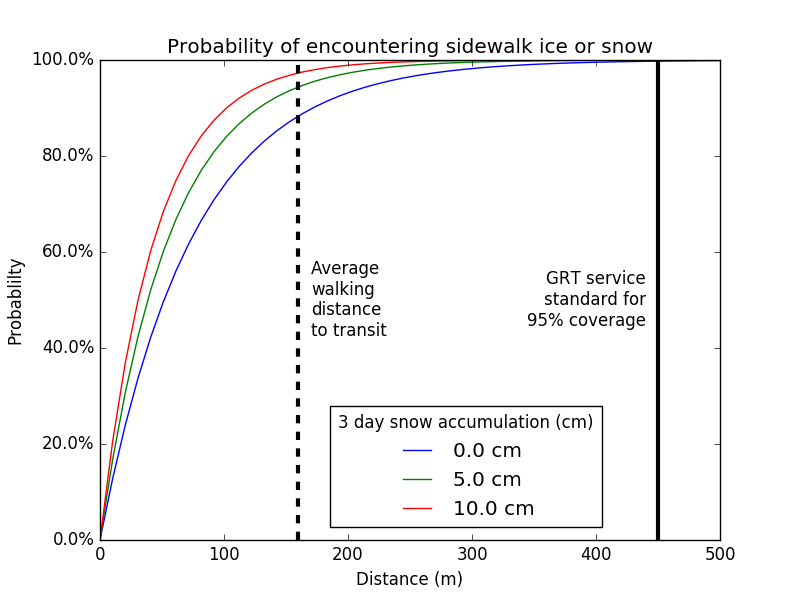Winter Sidewalk Study
TriTAG is pleased to release the results of our 2017 Winter Sidewalk Study. See our summary of our findings below, or read the whole report here.
The City of Kitchener manages sidewalk maintenance in winter by requiring adjacent property owners to clear municipal sidewalks of ice and snow. This has raised concerns over inconsistent sidewalk conditions and poor enforcement. In 2016, city staff presented Council with a report comparing complaint volumes under the present system with estimated complaint volumes based on the experiences of other cities that themselves take on the responsibility to plow all sidewalks.
The Tri-Cities Transport Action Group (TriTAG) was concerned by the reliance on primarily complaint volumes to assess the efficacy of sidewalk clearing, as that metric fails to tell us useful information about the desired outcome of sidewalk maintenance: walking mobility. Consequently, we recruited volunteers in early 2017 to record sidewalk conditions on specific streets in Kitchener (and one in Waterloo) on selected dates over a number of weeks. Volunteers counted sidewalks and street corners where clearing of snow or ice was insufficient to allow safe access by someone with an unsteady gait or who uses a wheelchair. We also tracked snowfall amounts several days prior to each count date. (Thanks to an early thaw in late February, we were only able to track the state of sidewalks between January 29 and February 16.)
We found that the majority of streets tracked had at least one sidewalk clearing compliance issue during the course of the study, and most had several compliance issues that would hinder mobility. Even during counts where there had been no snowfall for the previous three days, we observed an average of 13 potential obstructions per kilometre of sidewalk - or one obstruction every 77 metres.
Using the data we collected, we modelled the probability of encountering obstructions when walking various distances for 10 cm, 5 cm, and no snow accumulation in the previous three days. In all cases, the probability of being obstructed along a very short walk of 50 metres exceeds 50%. The probability of obstruction on a 160 metre walk, the average walking distance to access transit, is greater than 80% in all cases.
From these findings, we conclude that the way we leave sidewalk clearing up to adjacent property owners fails us, especially our most vulnerable. Consequently, TriTAG is recommending that Kitchener adopt metrics that assess the mobility impacts of its sidewalk policies, and that the city conduct a pilot program to more directly evaluate various sidewalk enforcement and plowing options.
